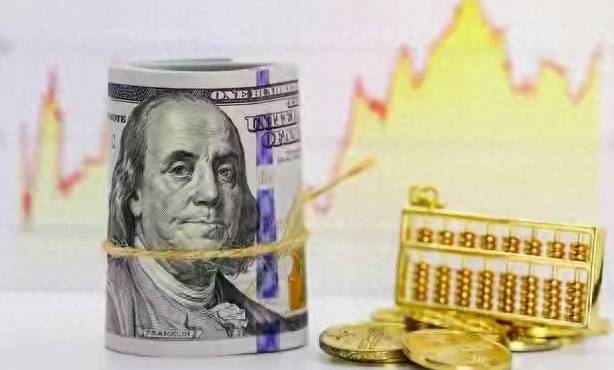In recent weeks, the financial landscape in the United States has been unsettled, igniting fervent speculation surrounding the Federal Reserve and its potential interest rate adjustments. As the market grapples with various economic indicators, many are questioning whether a significant rate cut is on the horizon, particularly one of 50 basis points. Meanwhile, the recent non-farm payroll data has delivered unsettling news, leading some analysts to assert that if the Fed does not take drastic measures—specifically a 300 basis point cut—the American economy might soon face catastrophic challenges.
The chatter of interest rate cuts has enveloped major financial news outlets, prompting a wave of reactions in the markets. Numerous analysts point to a troubling picture painted by the latest economic data, specifically citing the lackluster performance of non-farm employment reports. These reports are critical as they reflect the health of the job market, and when they fail to meet expectations, the outlook for the economy weakens accordingly. As thoughts drift to what a 50 basis point cut would entail, one must consider the broader implications for borrowing rates, consumer confidence, and stock markets, all areas that significantly impact the economic pulse of the nation.
Advertisement
But why are the non-farm payroll numbers underwhelming? According to the latest insights, the number of jobs created has fallen short of expectations, and some sectors are even witnessing layoffs. Such developments can understandably alarm economists. Non-farm payroll figures are typically viewed as vital indicators of economic well-being; when confidence in these metrics falters, a climate of uncertainty envelops consumers and investors alike. Many are left pondering the trajectory of the economy, raising crucial questions about potential recoveries or further declines.
In a striking turn of thought, certain economists have boldly suggested that for the U.S. economy to experience a genuine rebound, a reduction of 300 basis points is essential. They argue that while a 50 basis point cut may alleviate immediate financial pressures, it would be insufficient to reverse the ongoing trend of economic decline. This raises a compelling point: can we identify alternative, more robust policies that could stimulate genuine economic growth in such turbulent times?
Let us explore both the advantages and disadvantages of interest rate cuts. In theory, lowering rates presents a solid strategy for economic stimulation. It reduces borrowing costs for businesses and individuals alike, thereby encouraging spending and investment. However, there are legitimate concerns about the potential for inflation to spiral out of control as a consequence of such actions. Particularly in a climate where global supply chains remain disrupted, stimulating the economy might inadvertently accelerate price increases—a classic case of the cure being worse than the disease.
Concurrently, market sentiment has emerged as a pivotal element in this intricate equation. With growing anxiety regarding future economic prospects, stock market volatility has surged. As fear grips the hearts of investors, many are retreating from risk-laden assets in favor of safer havens. Should this trend persist, it could exacerbate instability within the financial markets, creating a vicious cycle that feeds into broader economic woes.
Aside from interest rate adjustments, policymakers also have other tools at their disposal, such as fiscal stimulus measures. In recent years, the U.S. government has launched a series of fiscal policies aimed at supporting the economy. However, these interventions often take time to manifest results, leading to concerns about aligning policy responses with the timing of economic needs. In the current scenario, should further easing occur, it is imperative that the government accurately gauges the timing and execution of these measures to prevent resource misallocation.
Another critical consideration involves the evolving stance of the Federal Reserve itself. Over the past year, the Fed has engaged in a continual reassessment of its policies to address mounting inflationary pressures alongside a slowing economy. The path forward necessitates a delicate balance, as a lopsided approach could yield unpredictable repercussions: leaning too heavily toward rate cuts could invite runaway inflation, while an excessively tight policy could hasten the economic downturn.

Presently, the American economic landscape faces unprecedented hurdles. While speculation suggests that a 50 basis point cut from the Fed next week might be forthcoming, the actual capacity of such a move to alter the economic course remains shrouded in uncertainty. Assertions positing that only a 300 basis point reduction could rescue the economy, though shocking, reveal a profound concern for the future stability of the economic climate.
As ordinary investors, how should we respond to this complex web of economic narratives? First and foremost, vigilance is paramount. Stay attuned to the ebbs and flows of the market, continuously adjusting investment strategies in response to new data. Secondly, resist the temptation to follow trends blindly; encourage a rational analysis of available information to ward off unnecessary losses in times of volatility. Lastly, diversifying investments serves as a pivotal survival strategy, mitigating risks in perennial uncertainties.
Navigating a convoluted economic environment demands a rational approach. Rather than surrendering to the whims of short-term market fluctuations, we must endeavor to analyze and evaluate conditions critically. Factors such as interest rate adjustments, labor market indicators, and economic policies intertwine intricately to shape our lives; maintaining composure enables us to discern the most balanced course of action amid the chaos.
In the days ahead, we will continue to monitor the Fed’s movements and delve into the realities masked by non-farm payroll data. It is our hope that during this economic storm, everyone may find their way through the turbulence and secure their own safe haven.
- 2024-08-01
Leave Your Comment